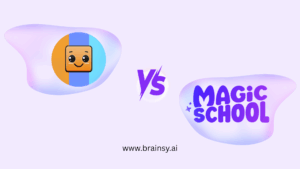Every teacher needs a clear classroom management plan. It’s like a roadmap for the school day. A plan lists the rules, routines, and steps everyone follows in class. It keeps lessons on track and problems to a minimum. In fact, research shows that troubles with classroom management are one of the top reasons new teachers quit. Having a good plan reduces stress for teachers and makes learning smoother for students. For example, one education guide defines a classroom management plan as “a teacher-created document that describes rules, procedures and routines students must follow”. In other words, the plan tells everyone what to do, so class time is safer, kinder, and more focused.
Teachers who use a solid plan find their days go much better. A clear plan helps protect the teacher’s well-being“a healthy teacher is an effective teacher” so a plan cuts anxiety by providing a quick decision path. It also sets rules and routines so students know what to expect, while supporting broader school goals often guided by AI for Administrators. In a well-structured class, kids spend less time waiting or guessing what to do. As one source explains, goals like setting rules and boundaries aren’t meant to control kids, but rather give the class structure so “students can focus on learning.” In short, a plan creates a safe, calm classroom where everyone can learn.
After you have a plan, start the school year by explaining it to students. Go over the plan as you would a lesson. Tell and show exactly what you expect. For example, on day one a teacher might role-play how to enter the classroom quietly or walk around the room to raise a hand. Showing students what good behavior looks like makes rules clear. Involving students in rule-making can also help – when kids help make the rules, they own them and follow them better.
What Is a Classroom Management Plan?
A classroom management plan is simply a written guide for running your classroom smoothly. It usually includes:
- Class Rules: A short list of the key do’s and don’ts (for example: “Listen and follow directions,” “Raise your hand before speaking,” “Keep your hands and feet to yourself,” “Respect everyone”.
- Routines and Procedures: Clear steps for daily activities (like lining up, turning in homework, or asking for help).
- Consequences and Rewards: Fair responses when rules are broken, and praise or incentives when rules are followed.
Research and education experts agree that a good plan combines all these parts. It lays out what will happen every day, and how students should act. This way everyone – both you and the students – always know the plan for any situation.
Why Your Plan Matters
A management plan makes school life better for teachers and students alike. For teachers, a plan is like a safety net. It reduces stress by giving a clear course of action when things go wrong. One expert notes that setting clear rules and structure lets students focus on learning instead of misbehaving. In fact, having a strong plan is especially important for new teachers. Studies found that poor classroom management is a top reason why teachers leave the profession. A thoughtful plan can prevent that. It also helps teachers build good relationships: by keeping the class organized and calm, teachers have more time to connect with students. And parents get involved too – many teachers share their plan with parents and even counselors so everyone understands the rules and consequences.
For students, a plan means consistency and fairness. Kids feel safer when they know exactly what is expected. When rules are simple and consistent, students spend less time worrying about what’s allowed and more time learning, especially when supported by AI Tools for Learning that help reinforce routines and track progress. Plus, a good plan often includes positive rewards – teachers can give praise, stickers, or fun privileges when students do the right thing. In one example a teacher made a point to call home with good news about a student. The parent said it was the first positive call they ever got, and it made the student feel proud. Rewards like that can motivate students and make following the rules something they look forward to..
Key Parts of an Effective Plan
1. Clear, Simple Rules
Pick just a few main rules (around 3–5). Keep them short and easy to remember. For example, a famous rule list includes:
- Listen and follow directions.
- Raise your hand before speaking or leaving your seat.
- Keep your hands and feet to yourself.
- Respect your classmates and your teacher.
These cover almost any situation in class. The trick is to teach each rule. Model it, practice it, and show students what it looks like when followed (and what it looks like when broken).
2. Involve Students
When possible, include students in creating the rules. Research shows students are more likely to follow rules they helped write. For instance, instead of relying only on the Lecture Method of Teaching, you might have a discussion or let small groups suggest rules on the first day. Then agree on the final list together. This gives students ownership. They’ll remember, “I chose that rule, so I want to keep my word.”
3. Routines and Procedures
A plan should spell out daily routines. Decide exactly how routines work and practice them. For example, have one procedure for starting class (like grabbing a starter worksheet quietly), one for ending class (like packing up books only after the bell), and one for handling materials (like turning in homework at a certain spot). When you explain these procedures clearly and practice them, transitions become quick and calm. Students know how to do things without questions, so less time is wasted.
4. Consistent Consequences
Decide now what happens when rules are broken. List these consequences in order (for example: a quiet warning, a short time-out, then a note home). Keep them fair and always enforce them kindly. Consistency is key – if a student sees the same rule broken twice with different results, they’ll feel rules are unfair. When you do enforce a consequence, handle it with care. Speak privately to the student, explain what went wrong, and how to do better next time. This helps them learn without feeling shamed.
5. Rewards and Positive Reinforcement
Don’t forget the good stuff! A strong plan also includes ways to reward good behavior. This could be praise in front of the class, stickers, extra free time, or a positive note sent home. As one expert notes, offering recognition and rewards encourages the entire class to maintain discipline. Even small acknowledgments (“I noticed how Tommy raised his hand – great job!”) can boost good habits.
6. Classroom Environment
The setup of your room is part of management. Arrange desks so you can see all students and they can see you. Keep high-traffic areas clear. Post the rules and routines where everyone can see them. Use visuals or color-coding if it helps. A calm, organized room reinforces the calm you want. For example, having a bright class calendar and students’ work on the walls can give a feeling of care and order. (These classroom details serve the plan by making expectations visible and the room easier to navigate.)
By including all these pieces – rules, routines, consequences, rewards, and a friendly environment your plan becomes a complete guide for the year.
Steps to Build Your Classroom Management Plan
Creating the plan can be broken into steps:
1. Review School Policies
First, check your school’s handbook on behavior and discipline. Most schools have required rules already. Use these as your foundation so you align with the larger school community. Then add your personal touch. For example, if the school already prohibits bullying and outlines detention, your plan can simply echo those points and then include your own daily-classroom rules on top. This makes sure your plan works with school rules, not against them.
2. Set Your Goals
Think about what you want your class to be like. What behavior and skills do you want to foster? Maybe your goal is “students treat each other kindly” or “everyone can learn without interruptions.” Writing down your goals helps guide the rest of the plan. For instance, if one goal is teamwork, you might include rules like “help classmates” or routines like group-sharing time. Defining goals (and even writing them on paper) helps you focus on what matters most each day.
3. Write It Down
Put all your rules, routines, and consequences in writing. Draft a short mission statement or class creed if you like (maybe with student input). Clearly list class rules. Outline daily procedures (e.g., how to line up at the door). Decide rewards (like a points chart or “Student of the Week”) and consequences. Even sketch your room layout if that helps. The key is clarity – the plan should make sense to anyone who reads it.
4. Involve Students
When school starts, go over the plan with your class. Explain each part in kid-friendly language. Better yet, show and practice everything. Role-play a correct and incorrect way to do each routine. If possible, get students’ ideas on the rules and make adjustments together. For example, after your initial rule list, ask “Does anyone have ideas to add?” This makes the plan feel shared. Remember, students will listen more if they help shape it.
5. Teach and Model
Don’t just post the rules, teach them. For instance, if “raise your hand” is a rule, spend a few minutes demonstrating exactly how to do it and have the class practice. One expert emphasizes modeling every behavior down to the last detail. You might say “When I have my hand up, the class stays quiet.” Then show what that looks like. The first routine you model sets the tone: it tells students you mean business.
6. Share the Plan
Make sure everyone involved knows the plan. Post a copy of the rules on your wall. Send it in a newsletter or email to parents. Discuss it with any aides or counselors who work with your students. One teacher noted it’s helpful even for counselors to know the plan, so “everyone knows the expectations”. When parents and staff understand the rules and consequences, they can reinforce the same expectations everywhere.
7. Be Consistent
Once the plan is set, stick to it. Apply the rules the same way every day. Praise good behavior right away and calmly enforce consequences when needed. Consistency builds trust. students know you will always do what you said. If you’re tired or busy, you might be tempted to let things slide sometimes. Try not to. It only takes a few skipped steps for confusion to creep back in. Remember: your students will notice if rules change on a whim, and that can actually invite misbehavior.
8. Reflect and Adjust
A plan is not set in stone. After a few weeks, notice what’s working and what’s not. Are some routines causing chaos? Is one rule unclear? Maybe students are doing great following most rules, but one keeps getting broken. It’s okay to adjust. For example, if lining up is messy, you could add a visual cue or a helper to guide it. Ask students for feedback (“What should we change?”) or watch what times of day are hard. Teachers who revisit their plan find they can solve problems early. The research suggests a plan “should be modified when needed” as the year goes on.
Adapting for Different Grades and Students
Every class is different, so adapt the plan to your age group and needs.
1.Young Children
For elementary students, keep things very concrete and visual. Use pictures to show each rule (cartoon of raising a hand, etc.). The more routine the classroom, the safer kids feel. Visual schedules, class jobs, and consistent daily routines work wonders. Praise even tiny successes (“Wow, you all packed up so quickly today – great job!”). At this level, teaching emotions and sharing is part of management too.
2. Tweens (Middle School)
Older kids want some independence. Let them help organize parts of the plan – for instance, let them vote on a class reward system or take turns being a “class monitor” for materials. Flexible seating or choice boards (choosing activities) can keep them engaged. But they also test limits, so be sure to have clear, fair rules. Building class community is key: maybe start with a team-building activity or morning meeting each day to set a positive tone.
3. Teens (High School)
Teenagers crave respect and fairness. Explain the reason behind rules (“These are here so everyone can learn safely”). Use real talk and even humor to connect. Involve them in decisions like seating or project topics. Learn their names quickly and show genuine interest in their lives. If students help set class norms (like a contract you all sign), they’ll tend to own up to them. Remember that authority at this stage often comes from mutual respect, not just strictness.
Also adapt for diverse learners. Include strategies for quiet or shy students (like a signal they can use for help), and be clear for students whose first language might not be English (simple language, visuals). Modern plans often build in social-emotional learning: for example, a “cool-down corner” or teaching conflict-resolution skills can be part of management. The goal is a plan that works for all personalities and backgrounds in your room.
Technology and Modern Tools (2026)
Today’s teachers have tech options to help their plan. Classroom apps (or even BrainSy’s free tools!) can track behavior points, make reward charts, or send announcements to parents. For instance, some apps let you give students points on a digital chart for following rules; when they hit a goal, they earn a reward. This adds fun and real-time feedback. You can also use reminder apps or timers so routines stay consistent (like a countdown app for work time). While apps can help, remember the core is still your plan: technology should support it, not replace teaching it.
Tips for Success
- Stay Positive: Focus more on encouraging good behavior than punishing bad. Catch students doing the right thing and celebrate it.
- Be Patient: It takes time for routines to stick. You might need to practice the same routine day after day until it becomes a habit. That’s okay.
- Stay Calm: If a problem occurs, handle it calmly. Use a quiet voice for one-on-one talks. This keeps the whole class from getting upset.
- Reflect on Yourself: Sometimes ask yourself, “Am I modeling these rules?” Even teachers slip (laughing, talking loudly), so catch yourself and correct it gently. Remember, kids learn by watching you.
- Build Relationships: Get to know your students. A kind word or learning about their interests can make them want to do well for you. A student who feels cared for is more likely to follow the plan.
With these parts in place—clear rules, practiced routines, and a caring approach—your classroom management plan will guide you through the year. You’ll spend less time correcting and more time teaching. As one teacher-author reminds us, classroom management is a skill that can be learned. Using your plan, you practice that skill every day.
Conclusion
A strong classroom management plan is the heart of a successful classroom. It helps everyone know what to do and what to expect. When you take the time to set clear rules, practice routines, involve students, and be consistent, your class becomes a respectful and focused learning community. Over time, you’ll see more learning and less chaos.
Ready to put this plan into action? Start by writing down a few clear rules and routines for your class. Explain them on day one and practice them well. And remember, even great plans evolve as the year goes on. Adjust if needed, and keep a positive attitude.
For extra help, check out BrainSy’s free AI tools for teachers. They can help you write lesson plans, track progress, and stay organized so you can focus on teaching. With a good plan and the right tools, you’ll be set up for a great year. Good luck – you’ve got this!
Frequently Asked Questions
1. What is a classroom management plan?
A classroom management plan is a written guide that explains classroom rules, routines, and expectations. It helps students know what to do and helps teachers keep the class calm, fair, and focused.
2. Why is a classroom management plan important for teachers?
A classroom management plan reduces stress and confusion. It gives teachers clear steps to follow when problems happen, which saves time and helps lessons run smoothly.
3. What should be included in a classroom management plan?
A strong classroom management plan includes clear rules, daily routines, fair consequences, positive rewards, and a classroom setup that supports learning.
4. How many rules should a classroom management plan have?
Most classrooms work best with three to five simple rules. Fewer rules are easier for students to remember and follow throughout the day.
5. Should students help create the classroom rules?
Yes. When students help create classroom rules, they feel more responsible for following them. This often leads to better behavior and a stronger classroom community.
6. How do you teach a classroom management plan to students?
Teachers should explain the plan clearly, model each rule, and practice routines with students. Role-playing helps students understand exactly what is expected.
7. Can a classroom management plan be changed during the school year?
Yes. A classroom management plan should be adjusted if something is not working. Teachers can reflect, gather feedback, and make small changes to improve behavior and routines.





